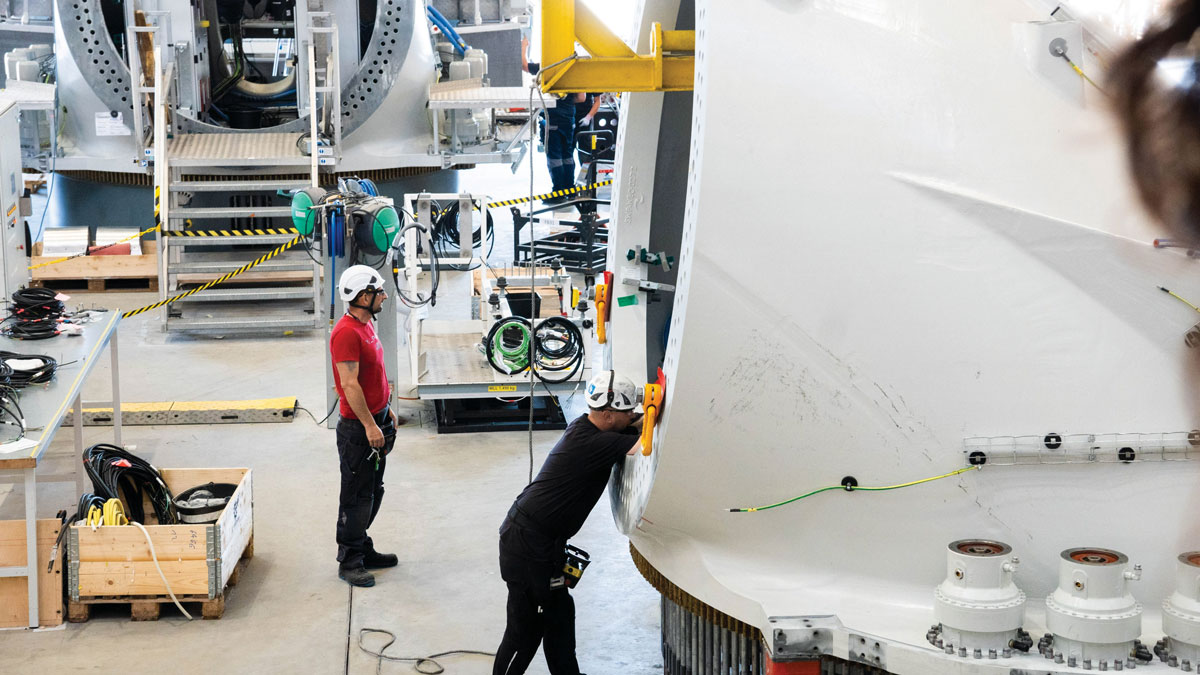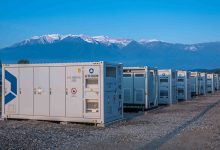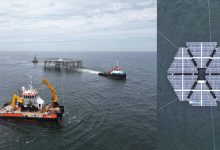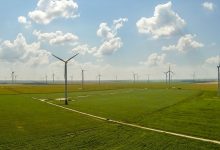European Wind Power Action Plan
As Europe’s major wind turbine manufacturers have all suffered losses on the back of project numbers, the European Commission is urging Member States and industry to take immediate action. Measures and proposals include increasing access to finance, easing pressure on the industry from international competitors, particularly from China, and facilitating access to foreign markets. In this context, the European Commission presented its European Wind Power Action Plan to support the sector. It faces insufficient and uncertain demand, a slow pace of permitting, Chinese competition, and lack of access to raw materials, and risks on availability of a skilled workforce.
Reaching the recently agreed EU target of at least 42.5% of energy consumption coming from renewable sources by 2030, with the ambition to reach even 45% from renewable sources, will require a massive increase in installed wind capacity, from 204 GW in 2022 to over 500 GW in 2030; also speeding up implementation through increased predictability and faster permitting. The record 16 GW of wind capacity installed last year represented a 47% increase compared to 2021. This is still well below the 37 GW/year needed to reach the EU 2030 target for renewable energy. While the wind power sector is a historic success story in the EU, its future growth trajectory faces a unique set of challenges.
The subsidy race with the US
The Brussels executive outlined a list of immediate actions it said it would take in cooperation with Member States and the wind industry. In recent years, and especially in 2022, all of Europe’s largest wind turbine manufacturers have reported significant operating losses, the pace of construction has slowed, and demand has become more difficult to forecast.
“There can be no successful green transition without a strong industrial base. We need to make sure all sectors are able to operate in a conducive environment to effectively contribute to reaching our ambitious climate and energy goals. This package will help the European wind sector to grow at home and compete globally, thus reducing dependencies on external suppliers and creating green jobs for workers,” said Maroš Šefčovič, Executive Vice-President of the Commission for European Green Deal, Interinstitutional Relations and Foresight.
The new plan presented by the European Commission comes after it recently announced that it would support the construction of power grids through an action plan to be completed by the end of 2023. It also unveiled the Green Deal Industrial Plan and the Critical Raw Materials Act earlier this year to support domestic manufacturing capacity for net-zero technologies.
It should be noted that many of the efforts Brussels is now making are a response to the subsidies and incentives the United States is giving.
Support for the wind industry
The measures and proposals cover permitting, auction design, access to finance, fair and competitive international environment, skills, and industry engagement. They are expected to address inflation, problems of access to raw materials, commodity price volatility and rising interest rates.
“European manufacturers are already world leaders, but we need to give them extra support in difficult economic times. Our European Wind Power Action Plan does just that. It will speed up planning and permitting so that projects can be delivered faster. It will help industry access finance, train skilled workers and ensure a fair international environment for our companies,” says the European Commission.
National renewable energy auctions are based almost exclusively on price, but do not adequately reward the high environmental and social standards of European products, European commissioners say, and in this context, they have pointed out that insufficient penalties are imposed for non-implementation of projects. As regards implementation and permitting, the relevant authorities are ready to accelerate the implementation of the revised renewable energy rules.
The Commission calls for the adoption of targets, medium-term auction programmes and long-term national plans. Financially, it will increase support through the Innovation Fund and other facilities. To this end, the European Investment Bank has been mandated to provide risk mitigation instruments and guarantees.
A fair and competitive international environment, according to the action plan, requires “trade defence instruments”, but also efforts to open access to external markets for EU manufacturers.
A fair and competitive international environment
To ensure that the wind sector can operate on a level playing field, the Commission closely monitors possible unfair trade practices which benefit foreign wind manufacturers. It will continue to use trade agreements to facilitate access to foreign markets, while promoting the adoption of EU and international standards for the sector. The Commission will also engage with investors to identify and address obstacles to investment.
Strengthening the workforce
The wind energy sector needs a larger and more skilled workforce as it expands, as does the solar industry. The Commission stressed that the Net-Zero Industry Act will open the door for the launch of net-zero industry skills academies, and skills partnerships are also underway.
A game-changer for Europe’s wind energy industry
The Package proposes a Wind Power Action Plan which sets out 15 actions to strengthen Europe’s wind energy industry.
Auction design is a key focus. The Commission proposes a set of pre-qualification criteria for projects. These criteria decide whether a project can bid into a wind energy auction. They cover data and cybersecurity, environmental protection, and the ability to deliver.
The Commission also stresses the critical importance of Member States indexing their auction prices and tariffs. Inadequate indexation is a big problem right now. Wind farms developers win an auction with a given price, then when they come to order their turbines a year later the costs have gone up and the auction price doesn’t work.
The Action Plan then sets out a series of measures to help finance investments in new factories, infrastructure, and the wind energy workforce. It proposes to double the money available for clean tech manufacturing under the next call of the EU Innovation Fund to EUR 1.4 bn.
The European Investment Bank (EIB) will also play a key role. They’ll provide de-risking tools and counter-guarantees by the end of 2023 to cover the exposure of private banks when they lend money to the wind industry. The EIB has also changed its lending policy to finance manufacturing in addition to its extensive financing of wind farms.
The Action Plan also calls for improved visibility on wind energy deployment. National auction plans will now be published on an EU digital platform. And as part of their revised 2030 National Energy & Climate Plans EU Member States will have to outline 10-year plans for wind energy deployment, including a 2040 outlook.
The Commission will also make full use of the trade instruments at its disposal to ensure a level-playing with non-European competitors. The Commission will closely monitor possible unfair trade practices like the subsidization of wind-related products imported into the EU and stands ready to activate the relevant policy instruments e.g., the EU Foreign Subsidies Regulation.
The Action Plan also seeks to further accelerate the permitting of new wind farms. The Commission will launch a dedicated tool by end of 2023 to help Member States digitalize their permitting processes. The European wind industry is already developing an online digital permitting tool, EasyPermits, which is now being piloted by local permitting authorities in Denmark and Poland. It allows permitting staff to process 3 times as many projects as before. And it improves information sharing and accountability with local communities and developers.
So, what happens next? The Wind Power Package sets out actions for the EU Commission, the EIB, the EU Member States and for the wind industry. All will need to play their part. And the actions are to be taken asap. There’s no waiting around for new EU legislation. The Commission proposes to enshrine support for the Package in a dedicated Wind Energy Charter to be signed by the end of the year.
“The Wind Power Package is a game-changer for Europe’s wind energy industry. The new actions on finance, auctions and permitting will speed up the development of wind farms. And crucially they’ll help Europe’s wind energy supply chain deliver the equipment for that. This is good for jobs and growth – and for Europe’s energy security. As Ursula von der Leyen said in her recent State of the Union speech, the future of Europe’s clean tech must be made in Europe,” WindEurope CEO Giles Dickson says.






